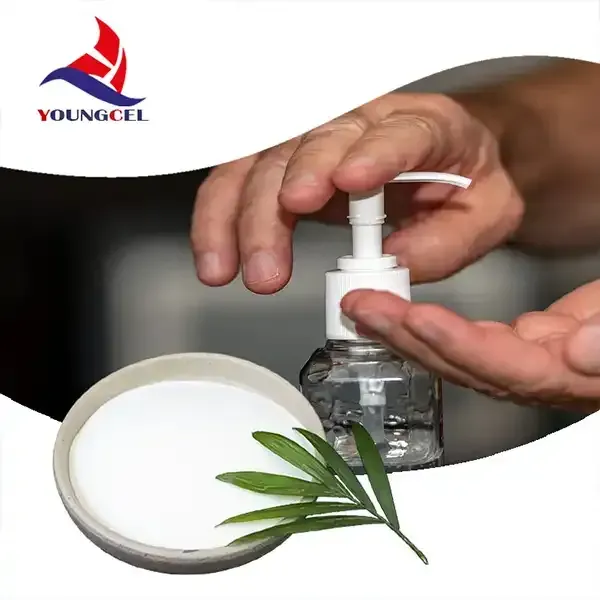Cellulose Ether A Focus on Hydroxyethyl Methylcellulose (HEMC)
Cellulose ethers are derivatives of cellulose, which is a natural polymer found in the cell walls of plants. These compounds have gained significant attention in various industries due to their unique properties and diverse applications. One notable cellulose ether is Hydroxyethyl Methylcellulose (HEMC), a versatile material that has found widespread use in construction, pharmaceuticals, cosmetics, and food industries.
What is HEMC?
HEMC is produced by the chemical modification of cellulose, wherein hydroxyethyl and methyl groups are introduced into the cellulose backbone. This modification enhances the solubility of cellulose in water, empowering it to form gels and thicken solutions. The properties of HEMC are dictated by the degree of substitution of the methyl and hydroxyethyl groups, which can be tailored to meet specific application demands.
Key Properties of HEMC
One of the standout features of HEMC is its excellent water retention capability. This property is crucial in construction applications, where it is used as an additive in mortar and plaster. The incorporation of HEMC improves workability, allowing for smoother application of materials while providing extended open time before setting. Moreover, its water retention properties minimize cracking and shrinkage during the drying process.
In the pharmaceutical industry, HEMC is employed as a binding agent and thickener in various formulations. It can enhance the viscosity of liquid drugs, ensuring proper delivery and performance. Additionally, HEMC's non-toxic nature makes it suitable for use in various healthcare products, including those intended for sensitive applications.
Applications in Construction
cellulose ether hemc

In the realm of construction, HEMC is known for its use in tile adhesives, stuccos, and grouts. By improving the performance characteristics of these materials, HEMC allows for better adhesion to surfaces and improved durability of the finished product. Its ability to retain moisture during the curing process is particularly beneficial in ensuring the long-lasting integrity of the construction materials.
Furthermore, HEMC contributes to the formulation of self-leveling compounds, which are used to create smooth surfaces in flooring applications. The use of HEMC in these compounds enhances flow properties and workability, making it easier for contractors to achieve high-quality results.
Cosmetic and Food Industry Applications
In cosmetics, HEMC is often utilized as a thickener and emulsifying agent in creams, lotions, and gels. Its characteristics provide a desirable texture and stability to final products, enhancing user experience. The ability to form a gel-like consistency makes HEMC an ideal ingredient for personal care items, ensuring smooth application and effective delivery of active ingredients.
HEMC is also finding its way into the food industry, where it serves as a thickener and stabilizer in various food products. Its ability to retain moisture and improve texture makes it valuable in sauces, dressings, and desserts. As consumers increasingly seek clean-label products, the natural origin of HEMC aligns with market trends favoring healthier, more transparent food formulations.
Conclusion
Hydroxyethyl Methylcellulose is a remarkable cellulose ether that showcases the versatility of cellulose derivatives across multiple sectors. Its unique properties, including water retention, thickening abilities, and non-toxic nature, make it an invaluable component in construction, pharmaceuticals, cosmetics, and food industries. As research and development continue to unlock new potentials for HEMC, its applications are likely to expand further, paving the way for innovative products and solutions that cater to the evolving needs of consumers and industries alike. The ongoing exploration of cellulose ethers like HEMC highlights the importance of natural polymers in modern technology, providing sustainable alternatives across diverse applications.
-
A Comprehensive Guide to Methyl Ethyl Hydroxyethyl Cellulose: Applications and Industry InsightsNewsNov.24,2025
-
Understanding Methyl 2 Hydroxyethyl Cellulose: Uses, Benefits & Industry InsightsNewsNov.24,2025
-
Hydroxyethyl Methyl Cellulose HEMC: Industrial Uses, Benefits & Future TrendsNewsNov.23,2025
-
HEMC Cellulose: Versatile & Sustainable Industrial Polymer | YoungcelNewsNov.23,2025
-
Methyl Hydroxyethyl Cellulose: Versatile Building Block for Industry & SustainabilityNewsNov.23,2025
-
CAS 9032 42 2: Understanding Polyvinyl Alcohol's Impact on Industry & SustainabilityNewsNov.22,2025




